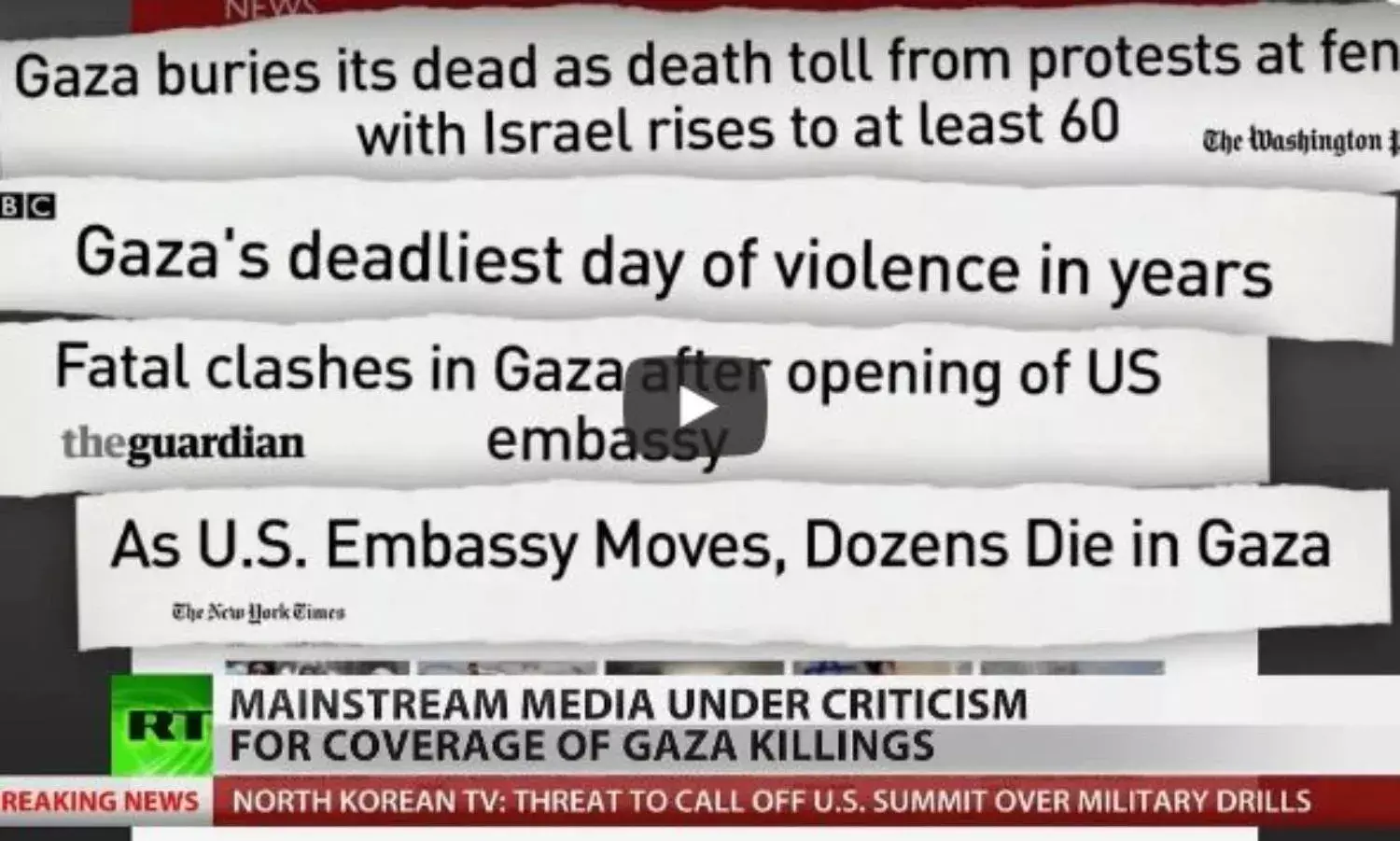Media Whitewash Israel’s Massacre in Gaza
100 Palestinians killed, one Israeli soldier injured!;

As Israel slaughtered dozens of unarmed Palestinians in Gaza this week, prominent media outlets employed innocuous headlines to obscure the horrific reality.
In the video above, RT correspondent Anya Parampil points to some examples of what she calls “an almost across the board obfuscation of Israel’s responsibility for the violence.”
A BBC headline read for instance, “Gaza’s deadliest day of violence in years,” while The Guardian ran with “Fatal clashes in Gaza after opening of US embassy.”
The word “clashes,” Parampil observes, “would lead you to believe there are casualties or injuries on the Israeli side.”
In fact after seven weeks in which Israel has killed some 100 Palestinians and injured 12,600 others, Israel has reported one minor injury to a soldier.
Parampil also criticizes the overemphasis on the opening of the US embassy in Jerusalem, obscuring that the protests have largely been driven by Palestinian resistance to more than a decade of Israel’s siege of Gaza and 70 years of dispossession since the Nakba, the 1948 ethnic cleansing of Palestine before and after Israel was founded.
Parampil notes that after fierce criticism on social media, The New York Times changed one of its notorious passive-voice headlines – “At least 28 Palestinians die in protests as US prepares to open Jerusalem embassy” – to the more straightforward: “Israeli troops kill dozens of Palestinian protesters as US embassy opens in Jerusalem.”
That original headline and other media whitewashing of Israel’s crimes have drawn lots of sharp criticism:
Writing in The Los Angeles Times soon after Israel massacred protesters during the first Great March of Returnrallies in Gaza on 30 March, UCLA professor Saree Makdisi commented on “how syntax and word choice shape, and even distort, representations of the Israeli-Palestinian conflict.”
“Even if the facts are accurately stated, the ways in which sentences are constructed, and the extent to which details are contextualized, can subtly lead readers astray,” Makdisi wrote.
Some observers noted that the satirical publication The Onion is doing a better job of getting to the heart of the matter than supposedly serious media:
The Onion ran such headlines as “IDF soldier recounts harrowing, heroic war story of killing 8-month-old child,” “Netanyahu announces day of mourning for fence damaged in yesterday’s conflict” and “Trump fascinated by Israeli cultural tradition of mass slaughter of protesters.”
Cracks
There have been some cracks: in recent days, The Washington Post published a video interview with Palestinian American human rights attorney Noura Erakat, and The New York Times published an op-ed by Ahmed Abu Ratima, an activist in Gaza who helped start the Great March of Return protests.
The Irish Times also ran an op-ed this week by Omar Barghouti, a founder of the boycott, divestment and sanctions movement for Palestinian rights.
Though these pieces are important, they are framed as “opinion,” while on the news pages of the same publications, Israeli propaganda often gets spun as fact.
Meanwhile, alternative media continue to provide venues for uncensored discussion.
On Tuesday, I spoke to The Real News about the massacre in Gaza:
I also gave these radio interviews:
And Democracy Now! returned to form with on-the-ground reporting from Gaza by its correspondent Sharif Abdel Kouddous after years of bare-bones coverage of Palestine.
(Electronic Intifada)

